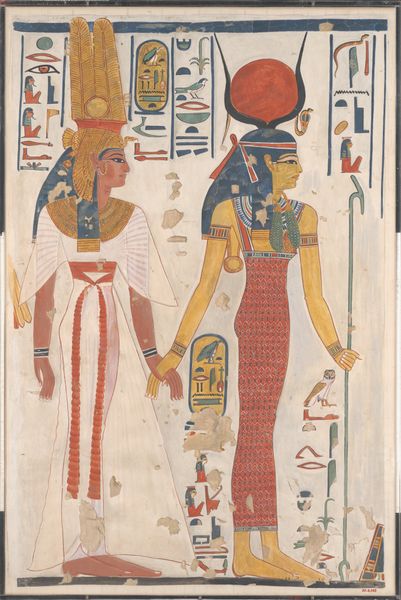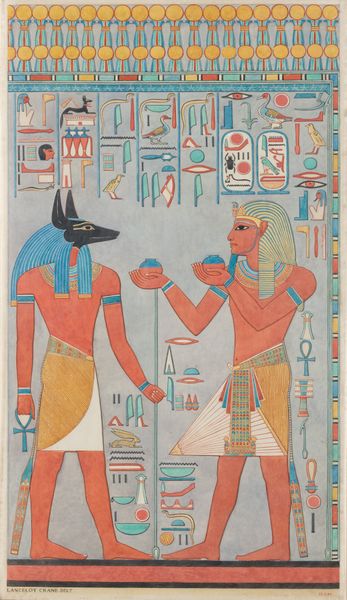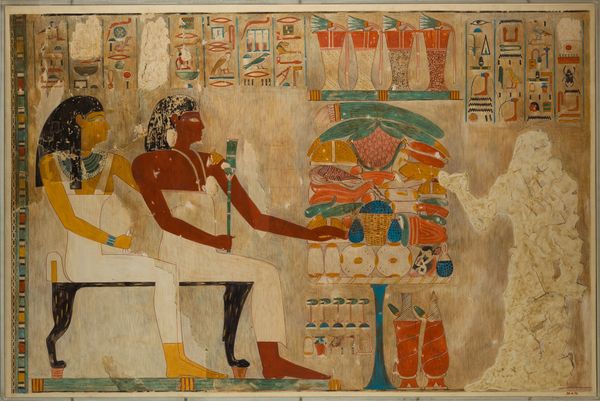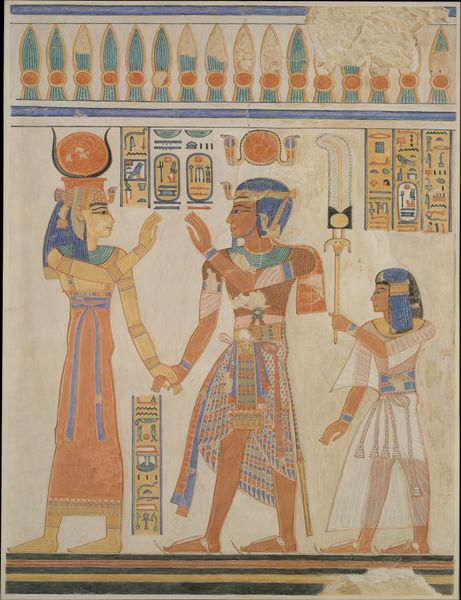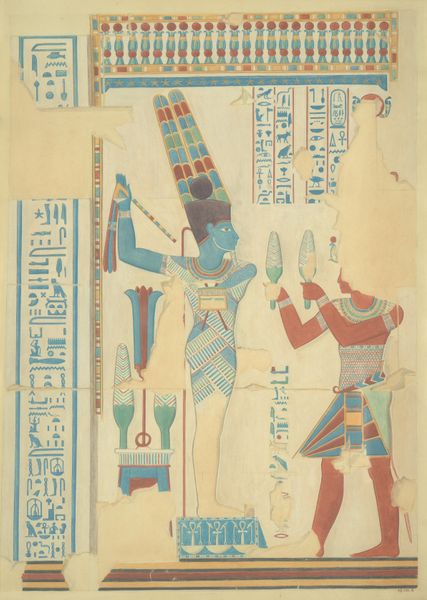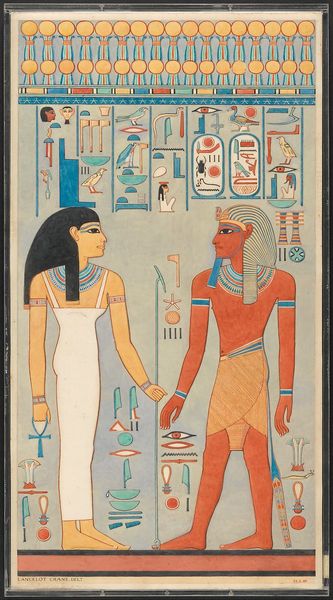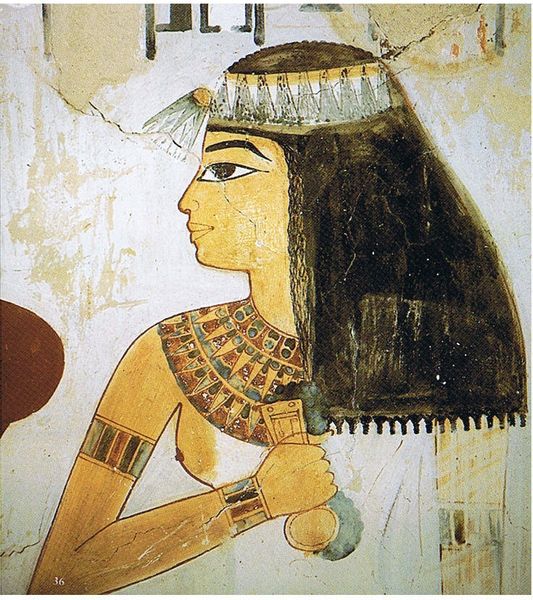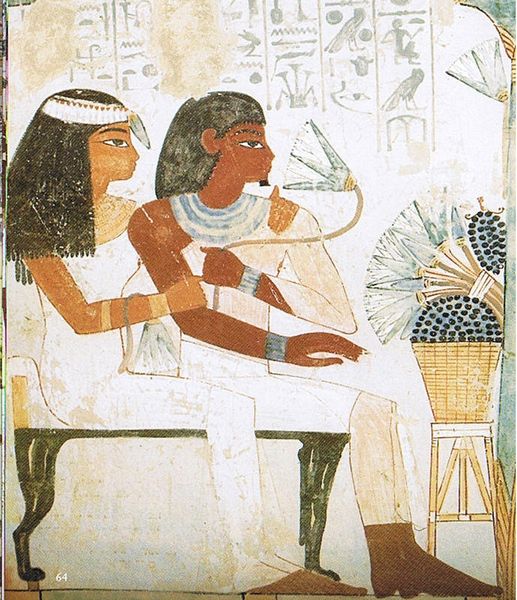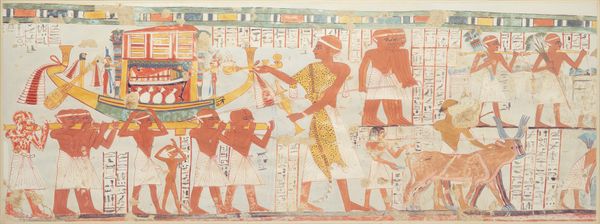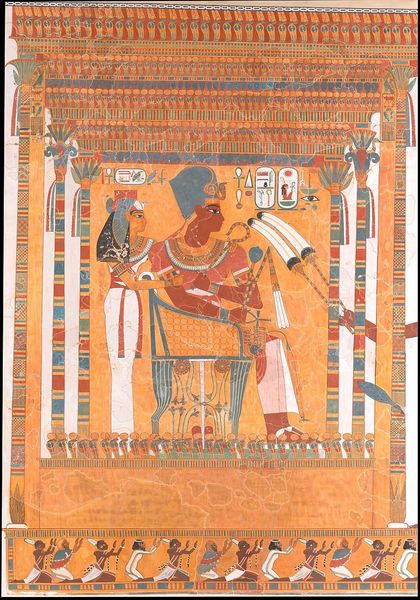
Peinture : portrait du prince Mantouhichopchf, fils de Ramsès-Meïamoun (XIXe dynastie) 1878
0:00
0:00
drawing, tempera, ink
#
portrait
#
drawing
#
tempera
#
ancient-egyptian-art
#
ink
Dimensions: 38 x 29 cm
Copyright: Public domain
Editor: Here we have a piece called "Peinture: portrait du prince Mantouhichopchf, fils de Ramsès-Méïamoun (XIXe dynastie)" made around 1878 by Émile Prisse d'Avennes using drawing, tempera and ink. It's such a detailed portrait, especially with the hieroglyphs above the prince. What stands out to you most in this work? Curator: What captures me immediately is the sense of serenity, the almost otherworldly poise in the prince’s profile. Prisse d'Avennes wasn't just creating a likeness; he was channeling the spirit of ancient Egypt, wasn’t he? Notice the careful delineation, the controlled line work... It's not merely representational, it's imbued with meaning. Does that resonate with you? Editor: Definitely! The colors too – they feel so symbolic. I'm also intrigued by the artist himself. What do we know about Émile Prisse d'Avennes' fascination with Egyptian art? Curator: Ah, Prisse d’Avennes. A fascinating character! He devoted much of his life to documenting Egyptian art and architecture, almost as if he was trying to hold onto something sacred that was fading away. I sometimes wonder, did he feel like an archaeologist of memory himself? He wasn't just recording; he was, in a way, re-enacting the past. Editor: That's beautiful! So, in a way, this drawing is more than just a portrait, it's a portal... Curator: Exactly! It makes you ponder doesn't it? Whether we can ever truly grasp a past so distant. I wonder, does the prince recognize himself in this portrayal after all this time? Editor: I never thought about it that way! It’s been eye-opening to explore the layers of history, artistry, and personal connection within this single image. Curator: Absolutely. Art like this offers us not just a glimpse into the past, but a reflection of ourselves in the mirror of history. Food for thought, indeed.
Comments
No comments
Be the first to comment and join the conversation on the ultimate creative platform.
